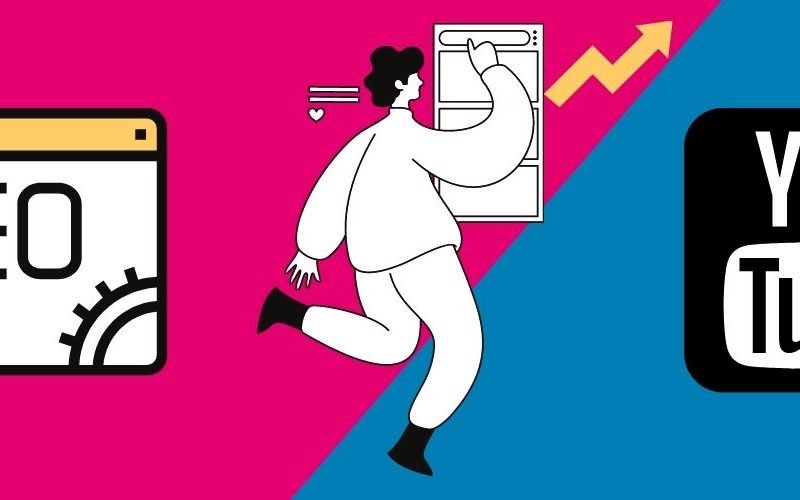You may have noticed a massive change in the SERPs over the last few years (and no, I’m not talking about Pandas and Penguins).
This is what I’m talking about: YouTube is taking over Google!
Because of YouTube’s incredible authority (and the fact that it’s a Google-owned property), almost every keyword seems to have at least one video on the first page. And sometimes over half of the SERPs are littered with videos.
Today I’m going to show you how you can get more traffic to your site by ranking videos in Google (and within YouTube’s internal search engine). This is precisely why many social media marketers choose to use website like YouTubeStorm to raise brand awareness and improve brand recognition.
How YouTube Search Works
As with Google’s numerous ranking signals, no one really knows the ins-and-outs of the YouTube algo.
From experimentation and reverse engineering, the SEO community has figured out that these are the most important signals:
- Title tag contains the keyword
- Video length (longer is generally better)
- User engagement (likes vs. dislikes, amount of the video that users watch etc.)
- Keywords appearing in the description
- Total number of views
- “ChannelRank”: the number of people following the video’s channel
You don’t need to go nuts and try to optimize for every single YouTube ranking signal. Like with “regular” SEO, creating awesome content is half of the game.
Keyword Research
You already know that keyword research is incredibly important for “regular” SEO success.
And YouTube SEO is no different. In fact, keyword research may even be MORE important for videos.
Why? Because Google doesn’t show video results for certain keywords. Somehow they deem certain keywords fit for video results, such as movie clips, tutorials, and highly visual subjects.
You can always optimize a keyword around your video and hope that Google will show it: but I’ve had more success targeting keywords that Google already shows videos in the SERPs.
I recommend using the Google Keyword Tool to find keywords in your niche…and searching them in Google.
If you see a long list of video results, you may want to create a video around that keyword.
And if you really want to rank within YouTube you can use their Keyword Suggestion Tool.
Creating Your Video
There’s no secret to making great videos: the content needs to be excellent. If not, you’re not going to do well with the user-experience metrics that YouTube uses to rank videos.
In general, here are some tips for making your video compelling and watchable:
- If you’re doing a screencast video, make sure that you use zooms, pans and highlights to make the content more interesting and easy to follow.
- Make sure your audio quality is top-notch. Believe it or not, people will judge your video primarily on audio quality. It makes sense to invest in a quality microphone if you’re serious about video production.
- If you’re recording with a camera, make sure your lighting is behind you, not in front.
Optimizing for Search
Here’s where the “SEO” in YouTube SEO comes into play.
Fortunately, the same on-page SEO fundamentals that you already use for pages and blog posts apply to YouTube as well, such as:
- Including your target keyword in the beginning of your video title
- Sprinkling (not stuffing) your keyword in the video description
- Adding LSI keywords in the video description
- Posting engaging content that keeps people hooked
The only on-page SEO wrinkle in YouTube is that you want to include your keyword in the video filename.
For example, let’s say that you were going to make a video about how to tie a shoe. When you’re done filming the video you’d want to name the video something like: how-to-tie-a-shoe-video.mp4.
Promotion
Once you have an SEO-optimized video uploaded, it’s time to promote it! Remember that views, likes etc. play a role in both YouTube and Google ranking: so don’t be shy about getting the word out.
Here are a few things you can do to get eyeballs on your new video:
- Send out an email broadcast to your list announcing your new video (be sure to ask them to like and share your video)
- Promote your video on social networks, like Linkedin, Google+ and Facebook
- Link to your video from authoritative pages on your site (and other sites that you contribute to on a regular basis)
Consider your video another page on your site, and build links to it accordingly. For example, if you were going to do some broken link building, consider asking the site owner to link to your video).
Final Thoughts
If you’re having trouble ranking for competitive keywords, you may want to try ranking videos instead.
They’re generally easy to produce at scale and easy to promote. And unlike a new blog post — which can take months to rank — YouTube videos often hit the first page within a few weeks.

